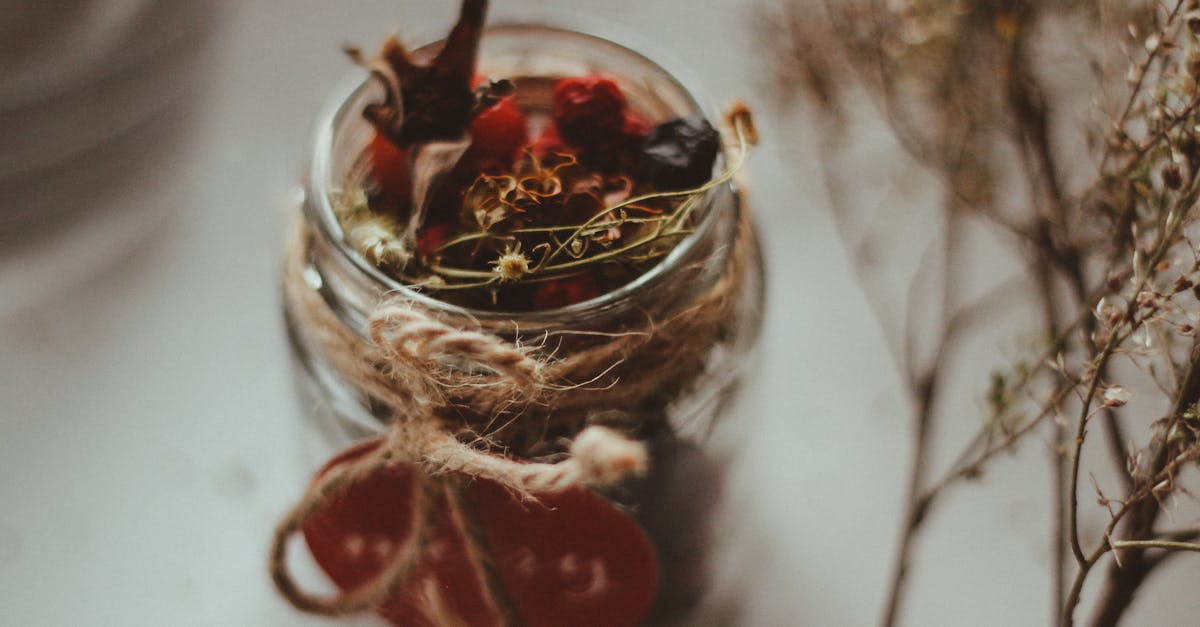Spice up your kitchen with DIY spice jar labels that’ll make your pantry the envy of every chef on the block. Forget the days of fumbling through jars, trying to decipher the mystery contents. With a little creativity and some fun labels, organizing spices becomes an art form instead of a chore.
Table of Contents
ToggleOverview of DIY Spice Jar Labels
Creating DIY spice jar labels offers several advantages for kitchen organization. Personalized labels bring a unique and stylish touch to spice storage. They help identify spices quickly, reducing clutter and saving time during meal preparation.
Incorporating custom designs or fonts allows individuals to express their creativity. Utilizing materials like chalkboard labels, printable paper, or vinyl makes for versatile options. Spices stay fresh longer when jars are properly labeled. Clear identification also enhances the overall aesthetic of kitchen spaces.
Establishing a labeling system can streamline the cooking process. Grouping similar spices together creates a cohesive look. Consistency in label size and style contributes to an organized appearance. For those who enjoy crafts, making labels can be a fun and satisfying project.
Many resources exist for inspiration and templates. Various online platforms offer free designs or customizable options to suit personal tastes. Choosing a labeling method that aligns with kitchen décor elevates the entire cooking experience.
DIY spice jar labels foster an organized pantry, making it easier to locate ingredients. A well-organized spice collection promotes creativity in cooking. Engaging in this hands-on project encourages individuals to take ownership of their culinary space while enhancing its visual appeal.
Benefits of DIY Spice Jar Labels
Creating DIY spice jar labels offers numerous advantages that enhance kitchen organization and aesthetics. Individuals enjoy the process of personalizing their spice storage, transforming it into both a practical and creative activity.
Customization Options
Customization stands out as a significant benefit. Creators personalize labels to match their kitchen decor or personal style. A variety of materials such as chalkboard labels, printable paper, and vinyl provide diverse options. Individuals can choose colors, fonts, and sizes that align with their preferences. This personalized touch not only beautifies the pantry but also reflects one’s culinary personality. Engaging with DIY projects fosters creativity, encouraging individuals to explore different designs while ensuring their spices remain easily identifiable.
Cost-Effective Solutions
DIY spice jar labels deliver cost-effective solutions. Rather than purchasing pre-made labels, individuals can create their own at minimal expense. Basic supplies like paper, adhesive, and markers often suffice. Many opt for free online templates, eliminating the need for designer prices. This approach allows for the creation of a cohesive look without breaking the bank. The DIY method also eliminates waste, promoting a more sustainable approach to kitchen organization. By investing time instead of money, individuals enjoy a well-organized spice collection that enhances meal preparation efficiency.
Materials Needed for DIY Spice Jar Labels
Creating DIY spice jar labels requires specific materials and tools. These items enhance the labeling process, making it easier to achieve a polished look.
Label Types and Materials
Chalkboard labels offer a reusable option, allowing for easy writing and erasing. Printable paper labels come in various designs, providing versatility in aesthetics. Vinyl labels give a durable touch and resist moisture, ideal for kitchen environments. Craft paper lends a rustic charm, enhancing the overall appearance of the spice jars. Adhesive labels ensure a secure attachment to jars, promoting longevity in use. Clear labels allow jar contents to show through, blending practicality with style.
Tools Required
Scissors are essential for cutting label materials to size. A ruler assists in measuring precise dimensions for uniform labels. A permanent marker ensures labels are legible and long-lasting. A computer and printer facilitate the creation of custom designs for those opting for printable labels. Double-sided tape can secure labels in cases where adhesive backs are lacking. A laminator adds an extra layer of protection, preserving labels from spills and general wear.
Step-by-Step Guide to Creating DIY Spice Jar Labels
Creating DIY spice jar labels involves several key steps to ensure a personalized and functional end product. Follow this guide for optimal results.
Designing Your Labels
Begin with the design process to ensure that labels are both visually appealing and informative. Select colors and fonts that coordinate with kitchen decor. Include spice names and usage suggestions on each label to enhance functionality. Utilize design software or online templates for a professional look, as these tools simplify customization. Keep designs consistent to create a cohesive aesthetic across all spice jars. Choose a size that fits well on the jars without overwhelming them. Finalize your designs before moving to the next step.
Printing and Cutting
Next, focus on printing the labels accurately for the best results. Use high-quality printable paper or labels that fit your design specifications. Adjust printer settings to ensure optimal quality, especially when printing intricate designs. After printing, allow the ink to dry completely to prevent smudging. For cutting, utilize scissors or a paper cutter for clean edges. Measure carefully to maintain uniformity across all labels. Organize the cut labels for easy application later.
Applying the Labels
Applying the labels requires careful attention to detail for a professional finish. Begin by cleaning the spice jars to ensure proper adhesion. Peel the backing off adhesive labels, then position them on the jars, making sure they are straight. Smooth out any bubbles or wrinkles for a polished appearance. For non-adhesive labels, use double-sided tape to secure them in place. Take your time during this step to ensure a neat and tidy look. Coordinate the placement of labels for a uniform presentation throughout the spice collection.
Storage and Organization Tips
Proper storage and organization of spices enhances the effectiveness of DIY spice jar labels. A systematic approach leads to a more functional kitchen environment.
Labeling Techniques
Choose specific labeling techniques to optimize spice identification. Utilizing clear, legible fonts makes it easier to read information quickly. Grouping spices by type or usage simplifies the cooking process. Experimenting with different label placements can create a visually appealing layout. For instance, placing labels on the front or top of jars improves visibility. Incorporating color coding allows for a quick glance identification system. Consider using a consistent format across labels to promote a cohesive look. Applying labels to the jars after cleaning ensures a professional finish.
Keeping Your Spices Fresh
Ensuring the freshness of spices is essential for maintaining flavor. Store spices in airtight containers to prevent exposure to moisture and air. A cool, dark pantry or cabinet works best for prolonging shelf life. Avoid placing spices near heat sources like stoves or ovens to maintain their potency. Check expiration dates regularly to discard stale spices. Replacing frequently used spices regularly helps maintain flavor profiles in dishes. When organizing, label container lids for easy access to inventory. The combination of proper storage and effective labeling creates a well-organized spice collection.
Creating DIY spice jar labels can significantly elevate both the organization and aesthetics of any kitchen. With a touch of creativity and personalization, these labels not only enhance the visual appeal of spice storage but also streamline the cooking process. By choosing materials that fit one’s style and utilizing clear fonts, anyone can craft labels that are both functional and attractive.
This DIY approach fosters a sense of ownership in the kitchen while promoting sustainability through reduced waste. With a well-organized spice collection, cooking becomes more enjoyable and efficient. Embracing this simple project can transform a cluttered pantry into a beautifully curated space, making it easier to find and use spices while inspiring culinary creativity.





